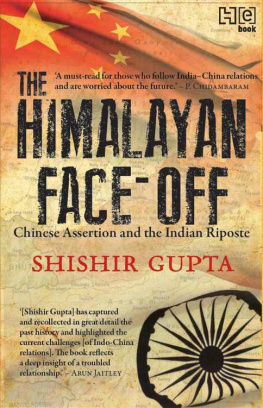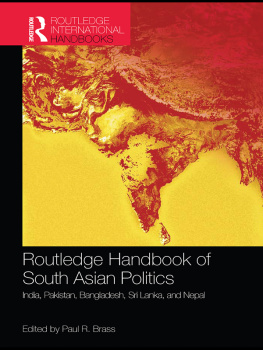INDIAN MUJAHIDEEN
The Enemy Within
Shishir Gupta
Downloaded from GAPPAA.ORG - No.1 Desi Ebook Site, It's FREE.


First published in 2011 by Hachette India
(Registered name: Hachette Book Publishing India Pvt. Ltd)
An Hachette UK company
www.hachetteindia.com

This ebook published in 2011
(Text) Copyright 2011 Shishir Gupta
Downloaded from GAPPAA.ORG - No.1 Desi Ebook Site, It's FREE.
Shishir Gupta asserts the moral right to be identified as the author of this work.
All rights reserved. No part of the publication may be copied, reproduced, downloaded, stored in a retrieval system, or transmitted in any form or by any means without the prior written permission of the publisher, nor be otherwise circulated in any form of binding or cover or digital format other than that in which it is published and without a similar condition being imposed on the subsequent purchaser.
Print edition HB ISBN 978-93-5009-252-1
Ebook edition ISBN 978-93-5009-375-7
All views, ideas and opinions expressed and all statements of fact are as reported by them. The publishers are not in any way liable for the same.
Hachette Book Publishing India Pvt. Ltd
4th/5th Floors, Corporate Centre
Plot No. 94, Sector 44, Gurgaon 122009, India
Cover design by Pinaki De
Originally typeset in Aldine401BT 11/14.5
by InoSoft Systems, Noida
Contents
To my parents
Dr Mridula Gupta
and
Jagdish Prakash Gupta
Downloaded from GAPPAA.ORG - No.1 Desi Ebook Site, It's FREE.
Downloaded from GAPPAA.ORG - No.1 Desi Ebook Site, It's FREE.
T he Indian state was in denial about home-grown terrorism for many years until serial bomb blasts in Varanasi in Uttar Pradesh on 7 March 2006 and Malegaon in Maharashtra on 28 September 2008 put an end to its delusions. New Delhis response to the incidents was predictable; Pakistan-based Islamist groups were blamed even before the first forensic reports arrived.
Although a chain of explosions in eastern Uttar Pradesh in 2005 and serial blasts in New Delhi on the eve of Diwali in 2005 suggested the involvement of Islamic radicals within the country, rather than terrorist groups like the Lashkar-e-Taiba (LeT) based in Muridke, near Lahore in Pakistan, the governments initial response was that some minority community boys had gone astray. Similarly, when serial blasts rocked Ajmer Sharif in Ajmer, Makkah Masjid in Hyderabad in 2007 and Malegaon in Maharashtra in 2008, the police believed these attacks were a result of internecine strife among various Muslim sects instead of the work of Hindu extremists. Vote bank politics in the country helped such unfounded claims prevail as the political leadership of both communities did not put enough pressure on the police to get to the bottom of these incidents.
Over the past decade, we have seen that as long as Indian youth was not involved, the public willingly bought the line that terrorism was being exported to the country from the Pakistan Afghanistan arc or through proxy groups based in Bangladesh and Nepal. However, the events of 2008 changed these perceptions and revealed the extent of the malaise within. The Indian Mujahideen struck with alacrity in several major cities, including in the serial blasts in the capital in September, before they were unearthed in a police encounter at Batla House in Jamia Nagar, New Delhi. Around the same time, investigations into the bomb blast in Malegaon on 29 September 2008, in which eight people lost their lives, led to the discovery of the Hindu terrorist group Abhinav Bharat. The brainchild of Lieutenant Colonel Prasad Srikant Purohit, a serving military intelligence officer, Abhinav Bharat was the Hindu response to radical Islamist groups. Its operatives are now being investigated for their role in Ajmer Sharif blasts, the Makkah Masjid bomb blasts and even the fire-bombing of the Lahore-bound Samjhauta Express near Panipat in Haryana on 18 February 2007. It is now evident that a number of these terrorist bombings were part of the chain of reactions and counterreactions of these denominational radical groups after Abhinav Bharat was unearthed and the Indian Mujahideen module was neutralized in the Batla House encounter on 19 September 2008. Barely two months later, the gruesome attack in Mumbai on 26 November 2008 by ten LeT gunmen, the subsequent arrest of Ajmal Kasab, one of the attackers, and the telephone intercepts of the communication between Pakistani handlers and the rampaging terrorists showed that terrorist groups were part of the arsenal used by Pakistan to strategically contain India. These acts of terror exploded the myth that the Indian youth was insulated from the global terrorism phenomenon and had little time for extremism.
This book focuses on the rise of indigenous Islamist fundamentalism in India, now spearheaded by the Indian Mujahideen, and the parallel growth of home-grown Islamic jihadists since Hindu radicals demolished the Babri Masjid in 1992. The communal riots post the 1992 incident, the rise of the Students Islamic Movement of India (SIMI) and the mutation of a section of aspiring Muslim youth into terrorists with the help of forces across the border is the purview of the book. The story of home-grown jihadists would have been skewed had it not been for the testimonies of David Coleman Headley and Sarfaraz Nawaz alias Surfur Nawaz on the involvement of the Pakistan Inter-Services Intelligence (ISI), top LeT leadership, the Al Qaida and the Karachi Project, whose demon child the Indian Mujahideen is. This book is the first-ever attempt to link up jihadists all over India and trace their linkages with terrorists based in countries like Pakistan, Nepal, Sri Lanka, Bangladesh, the United Arab Emirates, Oman, Yemen and Saudi Arabia.
Since terrorism is a hard subject to deal with, there are no extrapolations of events or editorial liberties in the text; the subject is confronted without any soft peddling on the issue in the name of majority or minority religion. With little knowledge on the Indian Mujahideen available in the public domain, other than statements made by senior police officials, this book charts the individual journeys and the experiences of these extremists who are now in high-security prisons all over the country. It studies the backgrounds, and socio-economic and political factors that turned these educated Muslim youth into extremists, without justifying the cause. The task is like working ones way through a labyrinth with hundreds of jihadist groups, thousands of individuals and their multiple aliases. There are many loose ends and not every action or link comes to fruition. There is no single yardstick, formula or equation to judge the course of events in the Indian jihadist movement, but the underlying theme is insecurity and basic survival emotions that have been exploited by handlers across the country and will continue to be toyed with unless the Indian political leadership insulates terrorism from politics. This story has been constructed on the basis of several interviews with top political leaders, police and intelligence chiefs, bureaucrats, diplomats, former SIMI activists and officials, as well as my experiences covering events like the Babri Masjid demolition, the Kargil war, the hijacking of flight IC-814, the 9/11 attacks, the attack on Parliament on 13 December 2001, the mobilization of Operation Parakram, the 26/11 blitz attacks in Mumbai and the bomb blasts that took place in various parts of the country intermittently. All the interviews, unless specifically mentioned, were conducted on the condition of anonymity. I read and analysed interrogation reports of arrested terrorists, intelligence inputs, the charge sheets filed in all the bomb blast cases involving the Indian Mujahideen and the National Investigation Agencys report on David Coleman Headleys interrogation in Chicago in June 2010 to get to the truth. In order to verify the claims made by the interviewees and in the reports, I visited Azamgarh, Indore, Bhopal, Bengaluru, Mumbai, Varanasi, Lucknow, Pune, Bhatkal and Hyderabad.




















